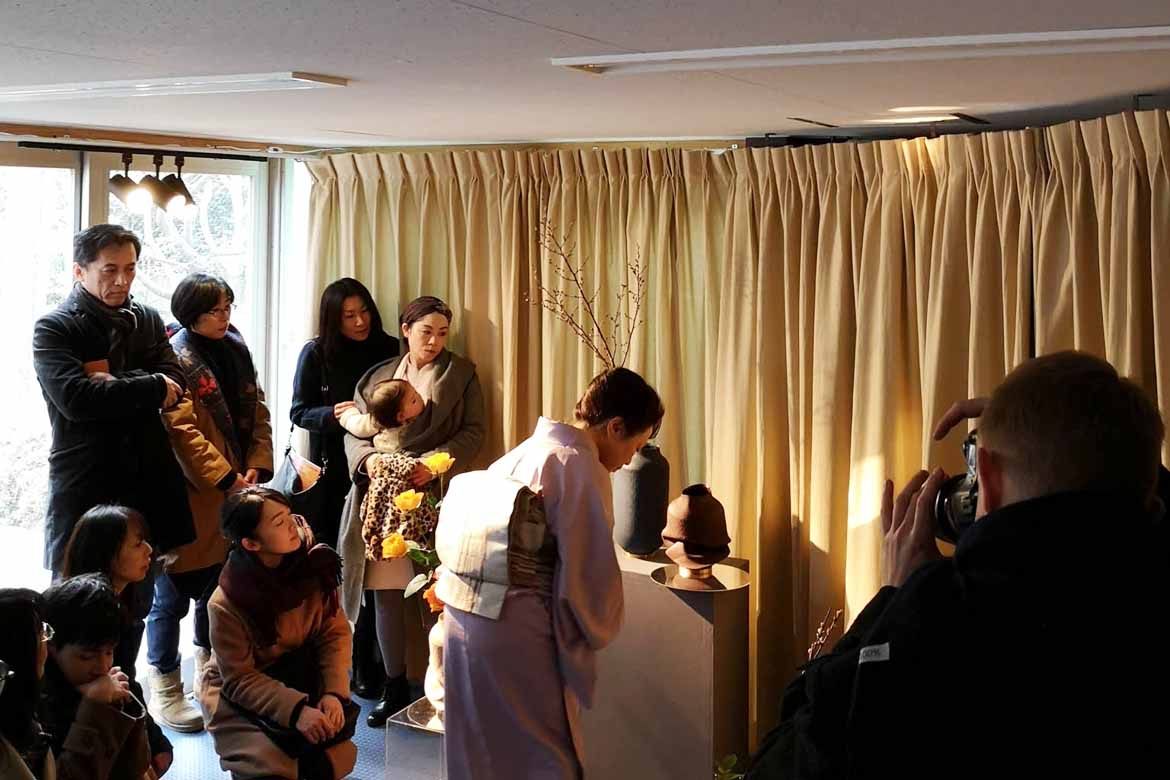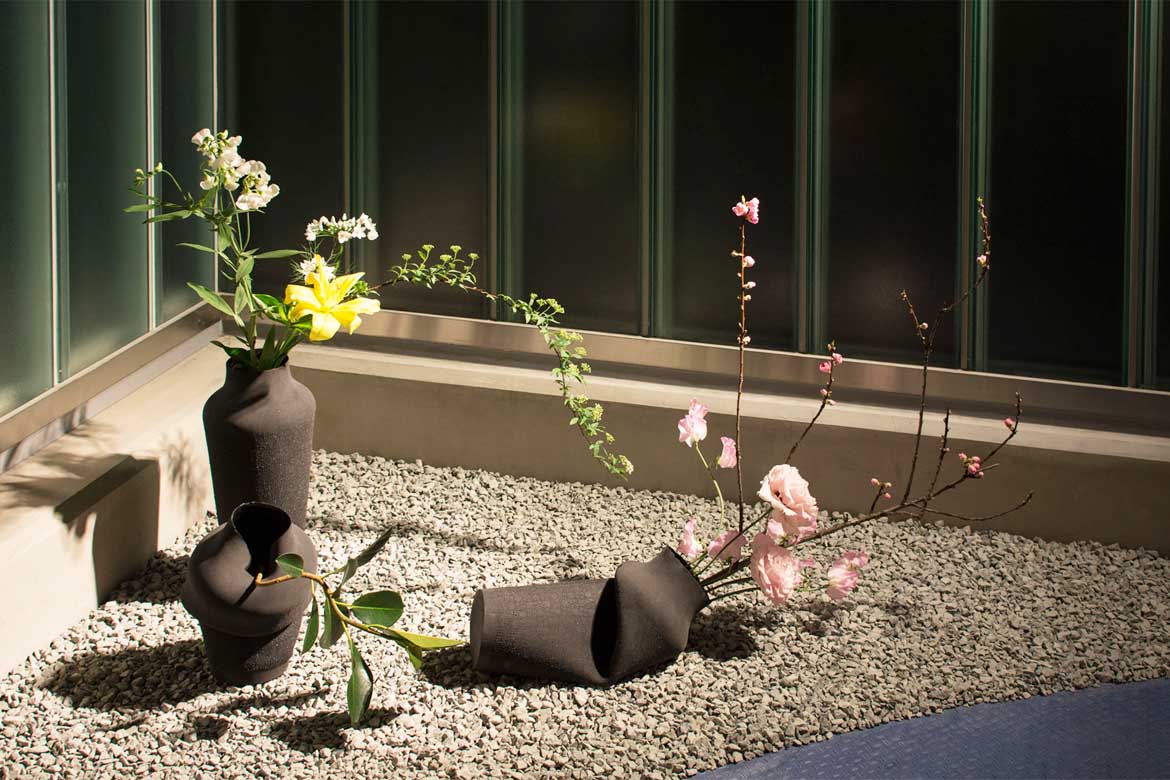In January, Birgit and Guillaume started an artist residency in Kyoto. While the first month was marked by new encounters, exciting visits and discoveries – February was shaped by focused research, concretisations of first ideas and of course: the Design Week Kyoto!
Shintoism
The month started with the celebration of “Setsubun”. The name means “seasonal division” and is associated with the Lunar New Year, which was previously thought of as a sort of New Year’s Eve. It is accompanied by rituals to cleanse away evil or bad luck, like e.g. burning old lucky charms as part of purification ceremonies. We celebrated that night at the Yoshida Shrine in Kyoto around a big bonfire.
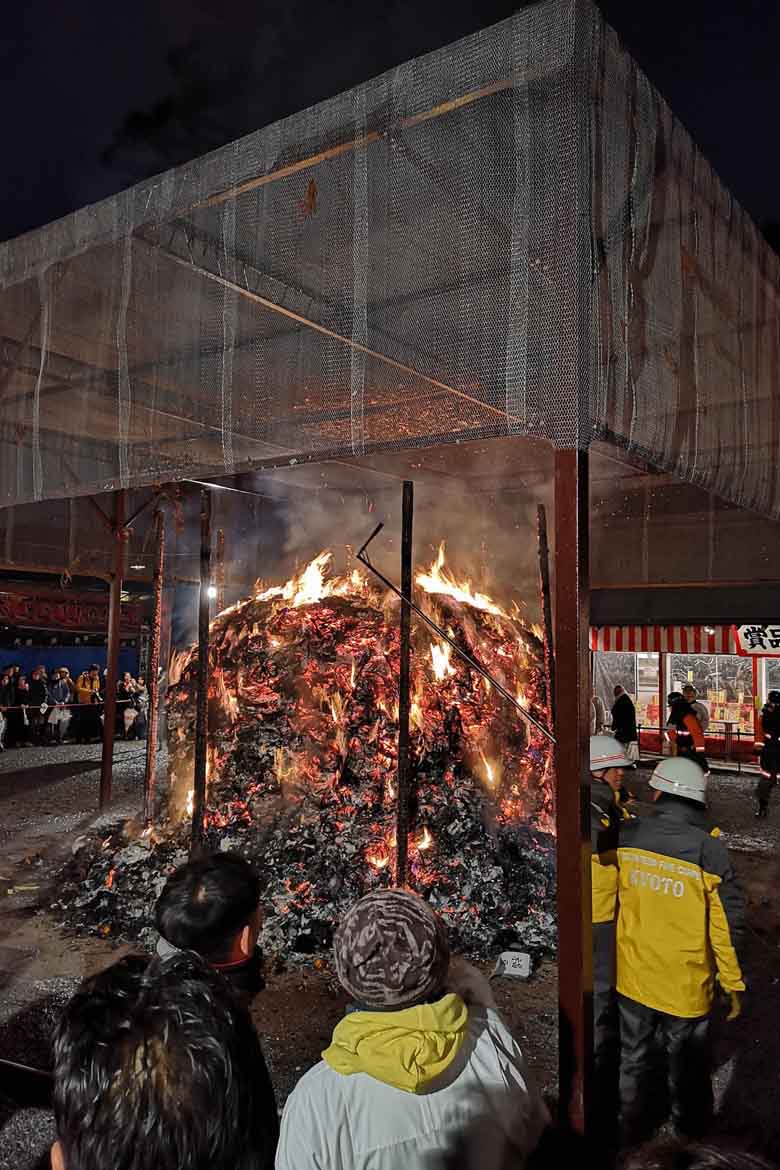
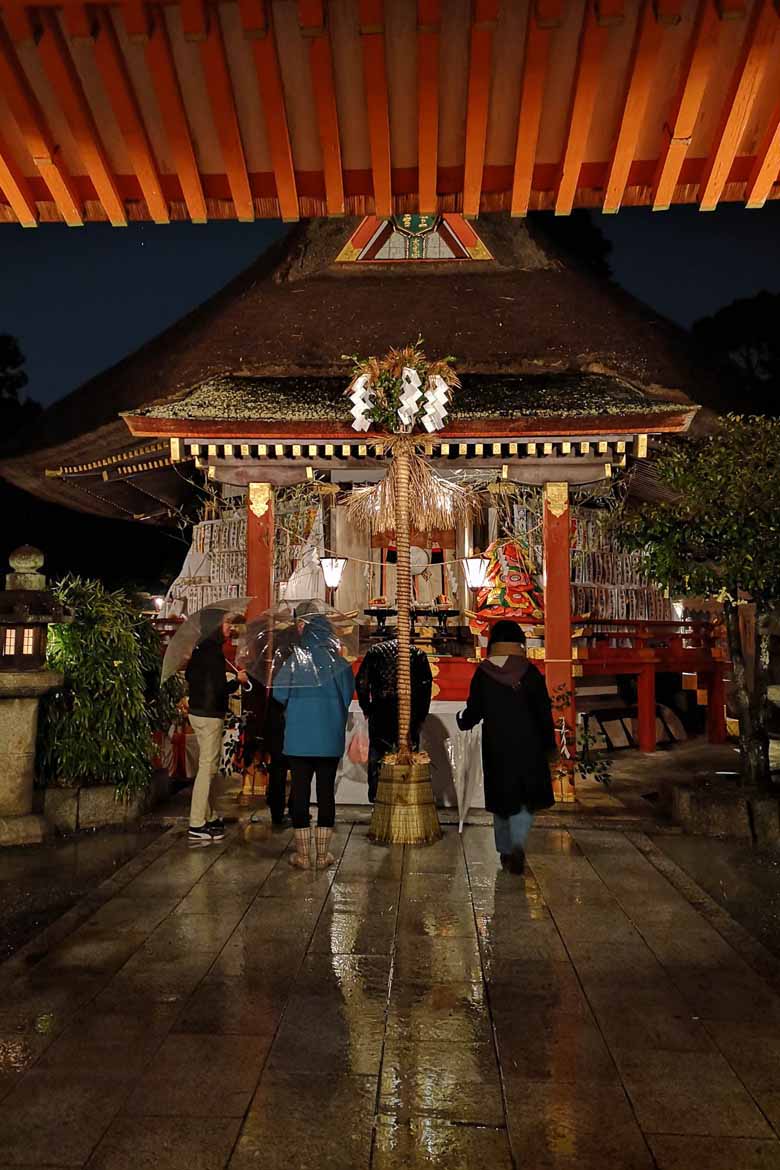
Harae is the general term for these purification rituals in Shintoism. Shintō is the oldest Japanese religion, which is a diffuse system of beliefs with multiple gods (kami). The power of these gods resides in nature – like waterfalls, rocks, lakes or trees.
Purifying one’s body with water, before worship these Shintō gods, is an important religious rite. Such an act of purification is called misogi. Before entering a shrine one has to wash hands and mouth. Water pavilions (Temizuya) are therefore always located in front of the entrance gate.
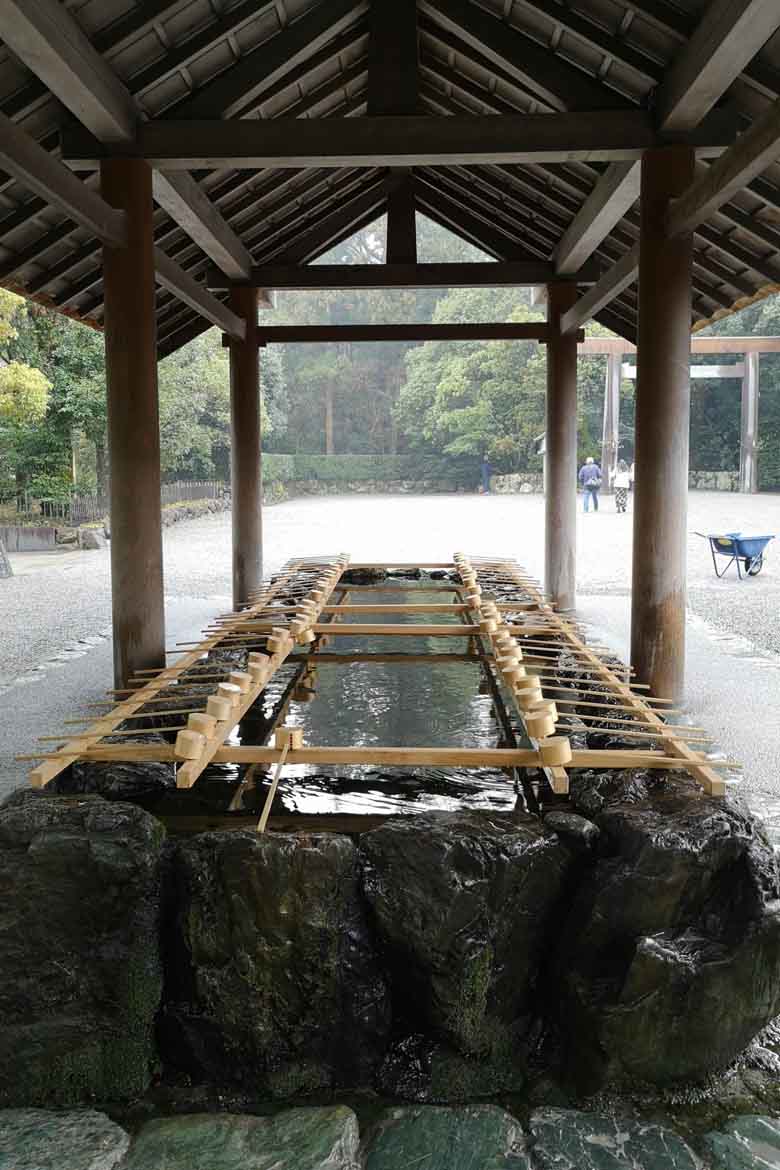
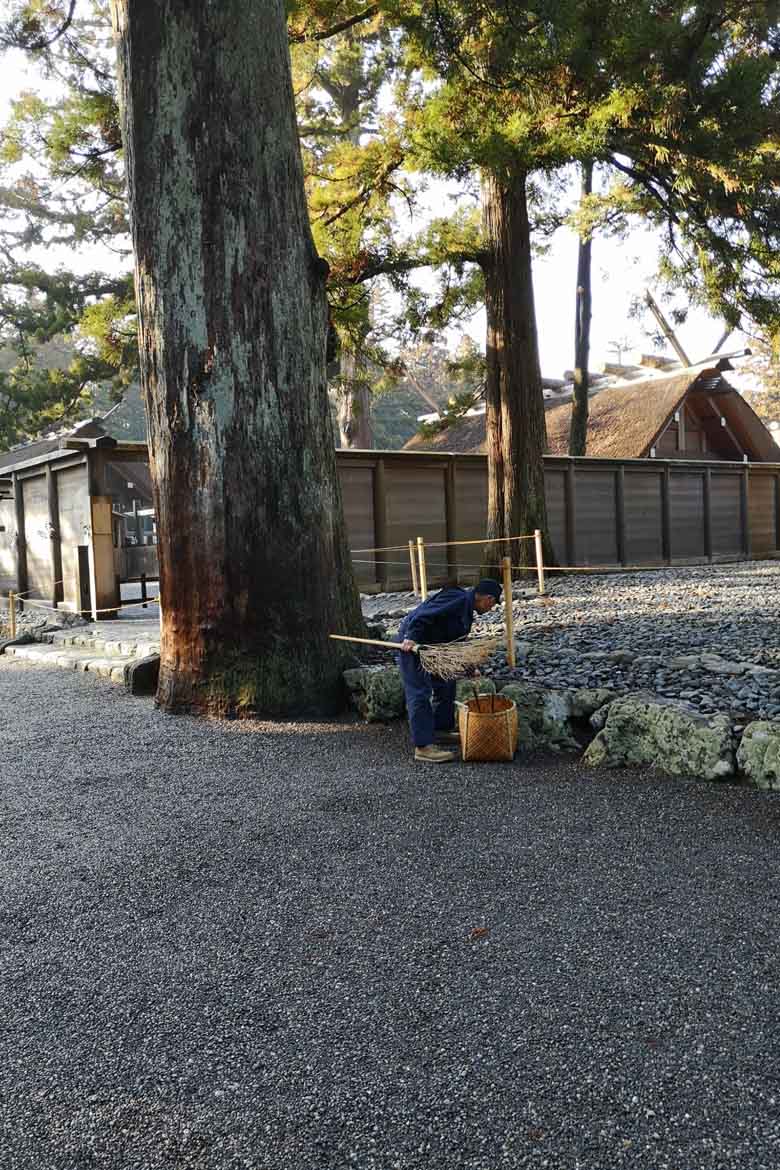
To experience and understand more deplete the connection between Japanese culture, nature and cleaning we visited Ise Jungu. Ise is the holiest and biggest among all shrines of Japan. The area includes 125 Jinja (shinto shrines), centred around Kotaijingu (Naiku), dedicated to Amaterasu-Omikami (sun goddess) and Toyo’uke-daijingu (Geku) dedicated to Toyouke-no-omikami (god for the basic necessities of life e.g.food).
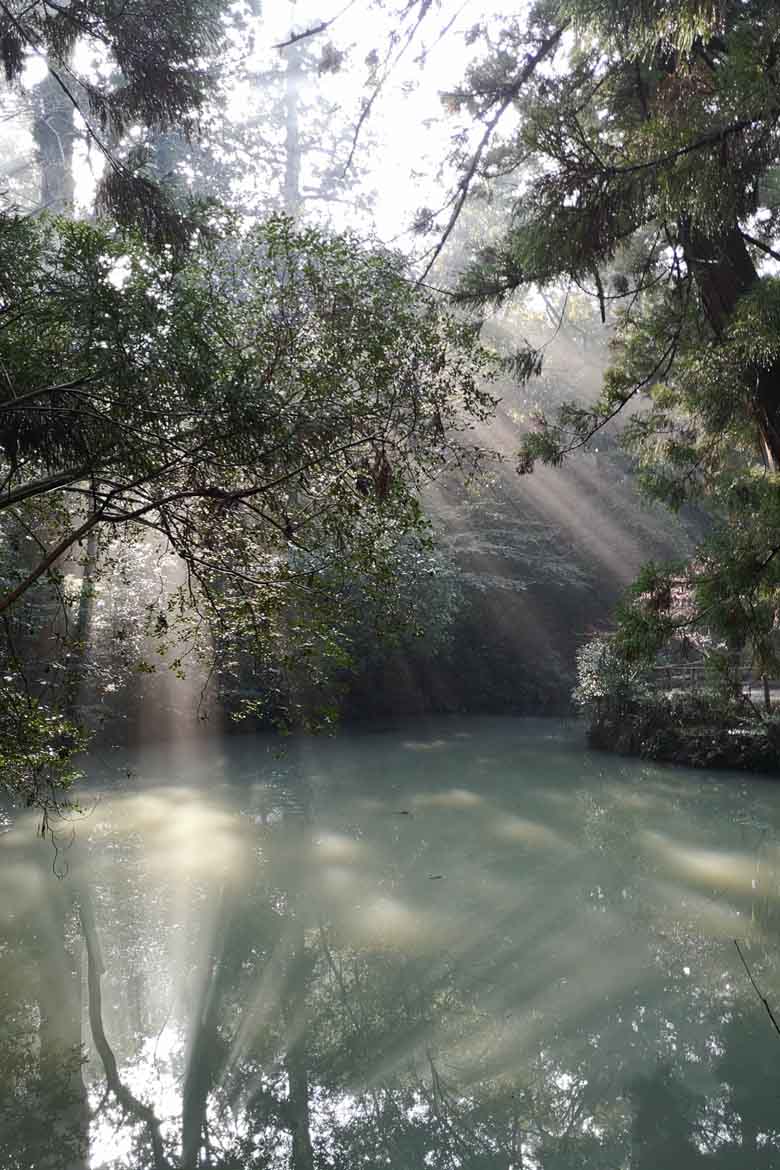
When we arrived at Geku, it had been raining all day. However, once we entered the forest surrounding the shrine, suddenly the sun came out. Rays of sunshine were breaking through the moistures trees creating a breathtaking setting. We were literally immersed by the spirituality and holiness of the place. The next morning we observed the cleaning practice at sunrise time in Naiku.
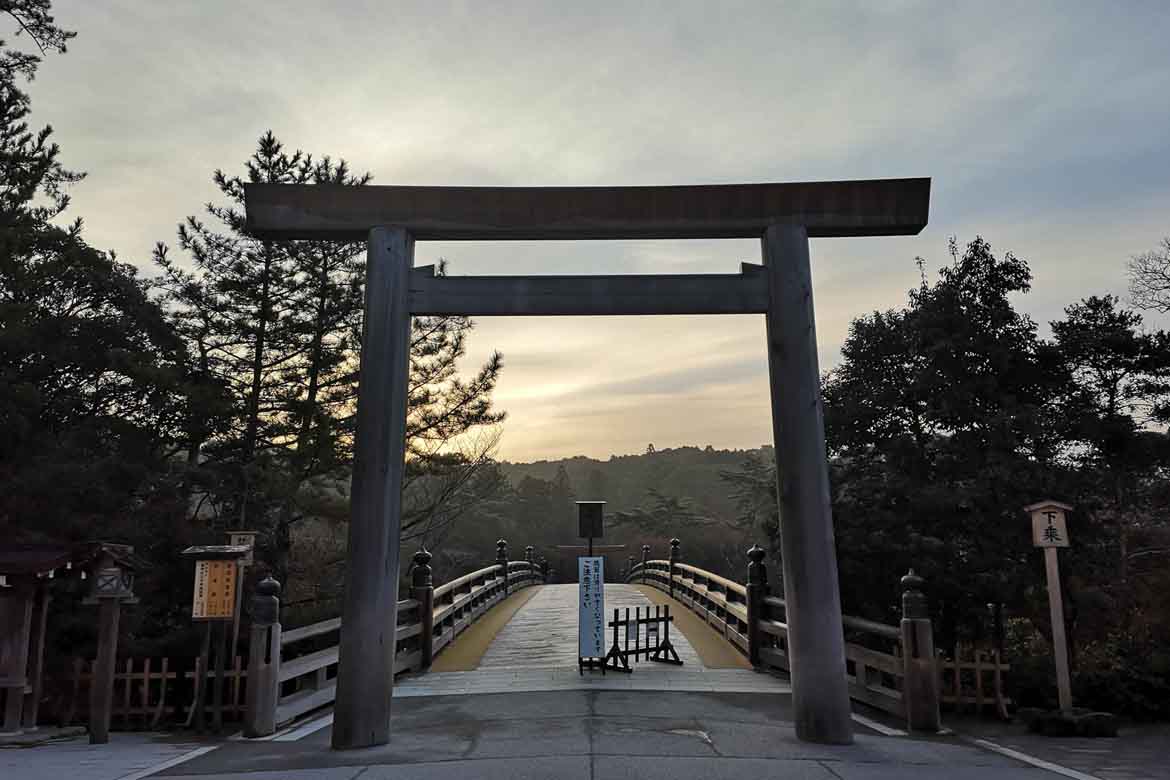
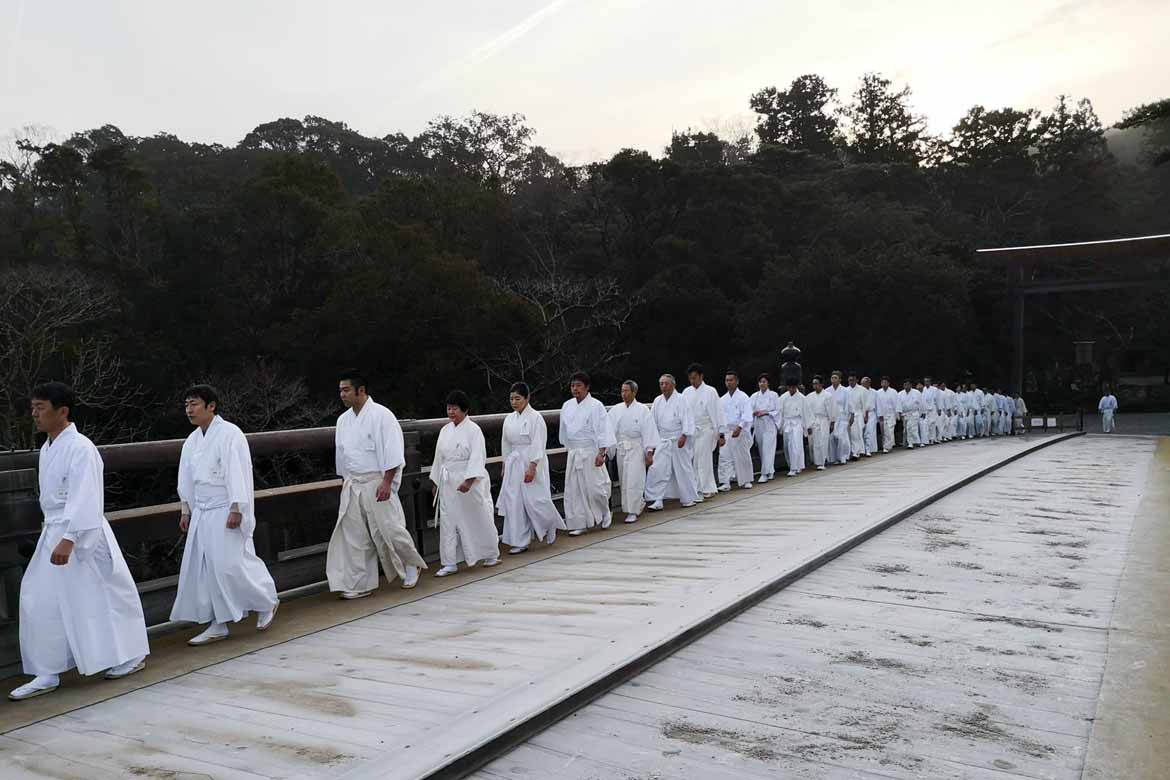
Buddhism
Religious beliefs and values such as Buddhism, were brought to Japan from China, and came to co-exist and mix with Shintō – creating a unique value system. One important element taken up by Buddhists is purification.
Cleaning became an essential element of the the daily practice of Buddhist monks and is the uniting element of the divers Buddhism Sects in Japan.
Based on the book “A monks guide to a clean house and mind” by Shoukei Matsumoto, Guillaume and I developed a daily “cleaning” routine. We also had the wonderful chance to interview the author and to clean with him in the Hōnen-in Temple.

Next month we will focus on the meditative aspects of cleaning. Starting march with a visit to Tenri where we will stay and clean with monks of Tenrikyo and ending with an intense workshop session at Eiheiji.
Cleaning and everyday life
We had many inside full conversations about cleaning, how it is perceived on a personal and cultural levels, associated with obligation, social pressure and environmental aspects.
Cleaning in Japan has also various communal aspects. The city of Kyoto e.g. has various city cleaning activity, where everyone is welcome to participate – like e.g. “green bird”. Guillaume joined them during their regular cleaning meeting on Friday night.
But also companies like Ueda Honsha from Mitsuyasu are taking active steps. We joined them on their monthly street cleaning around their office building.
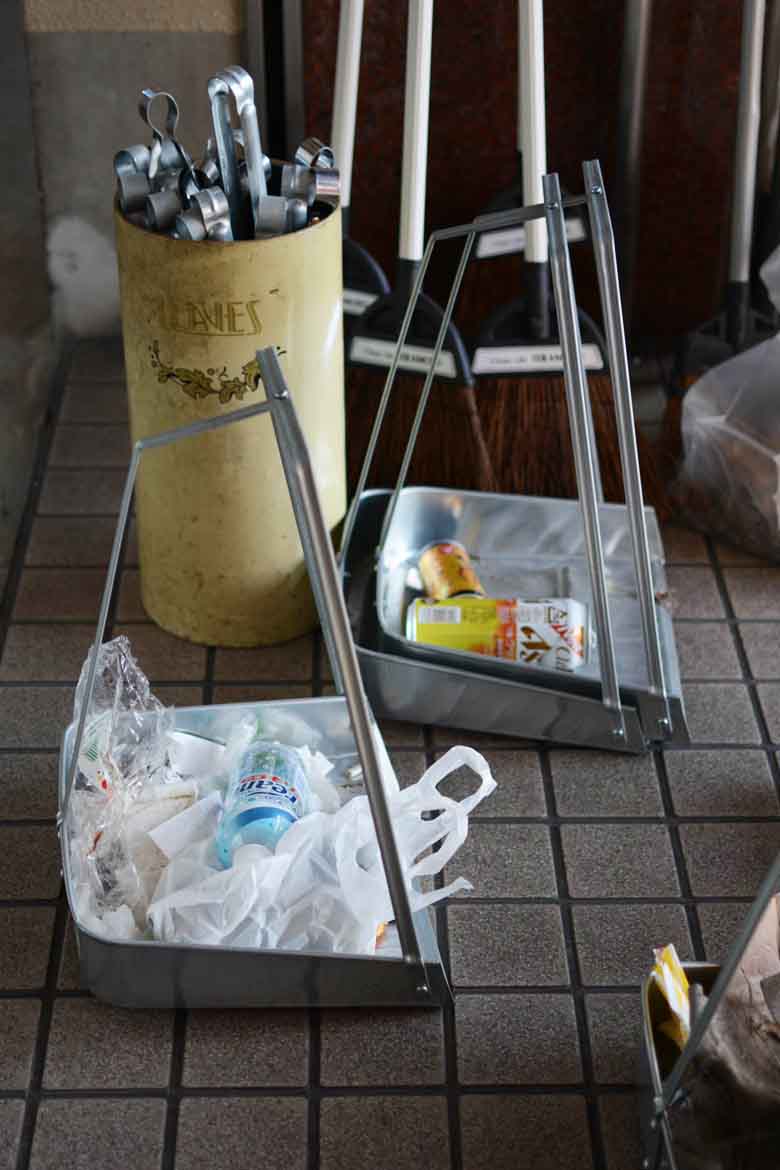
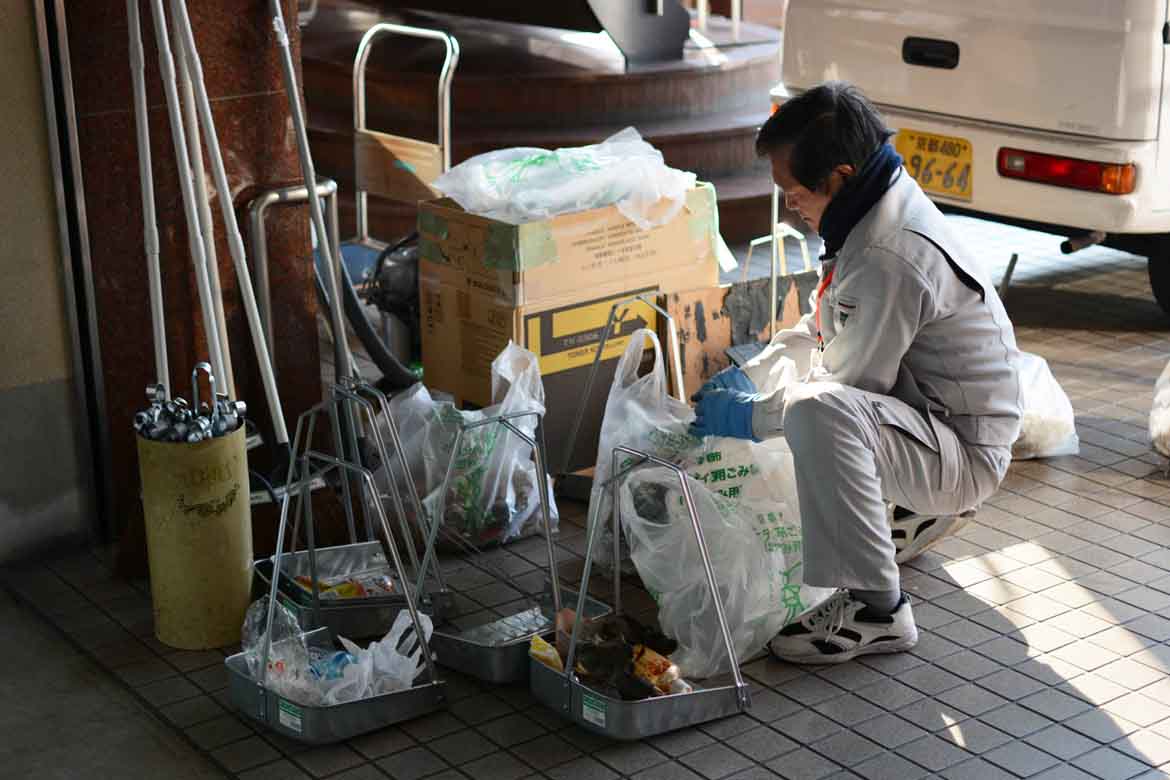
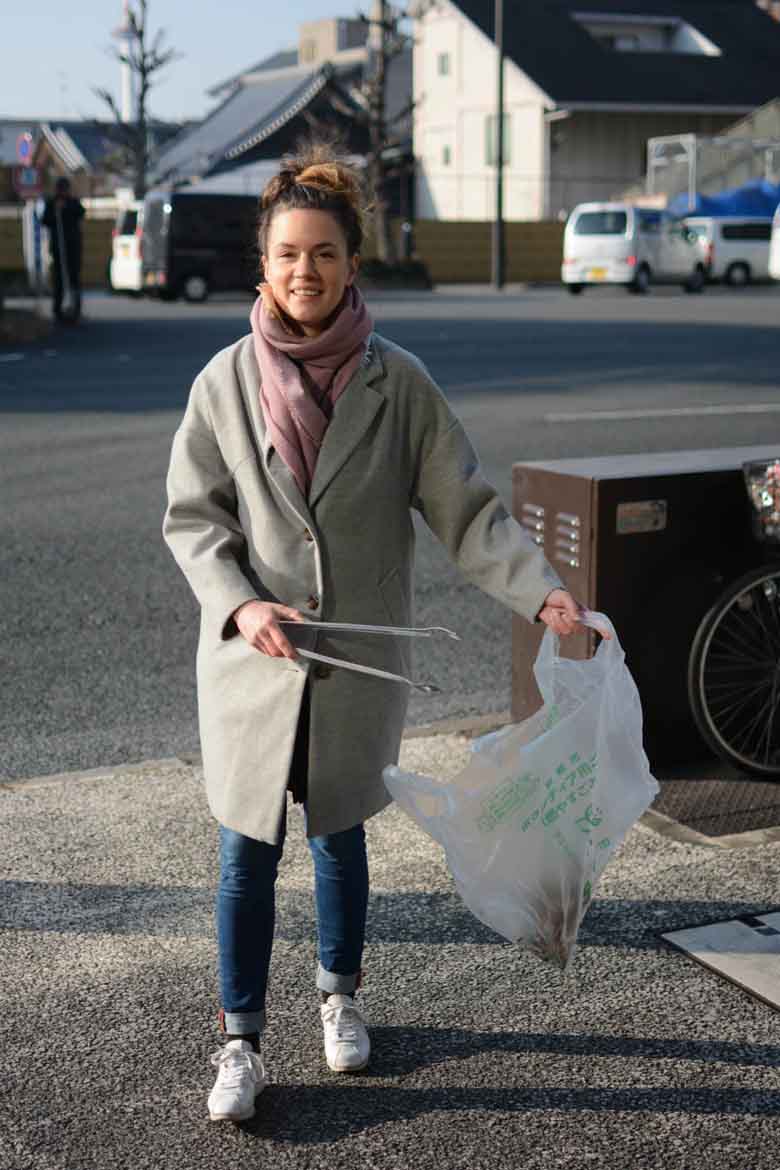
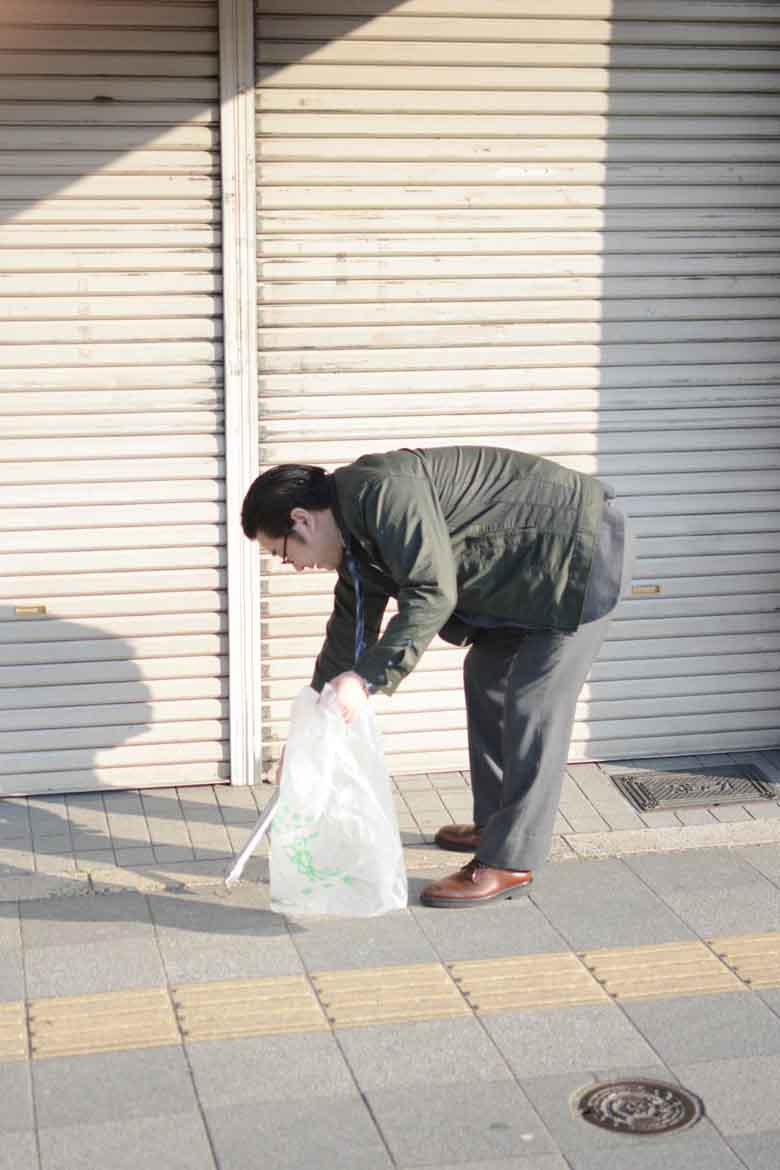
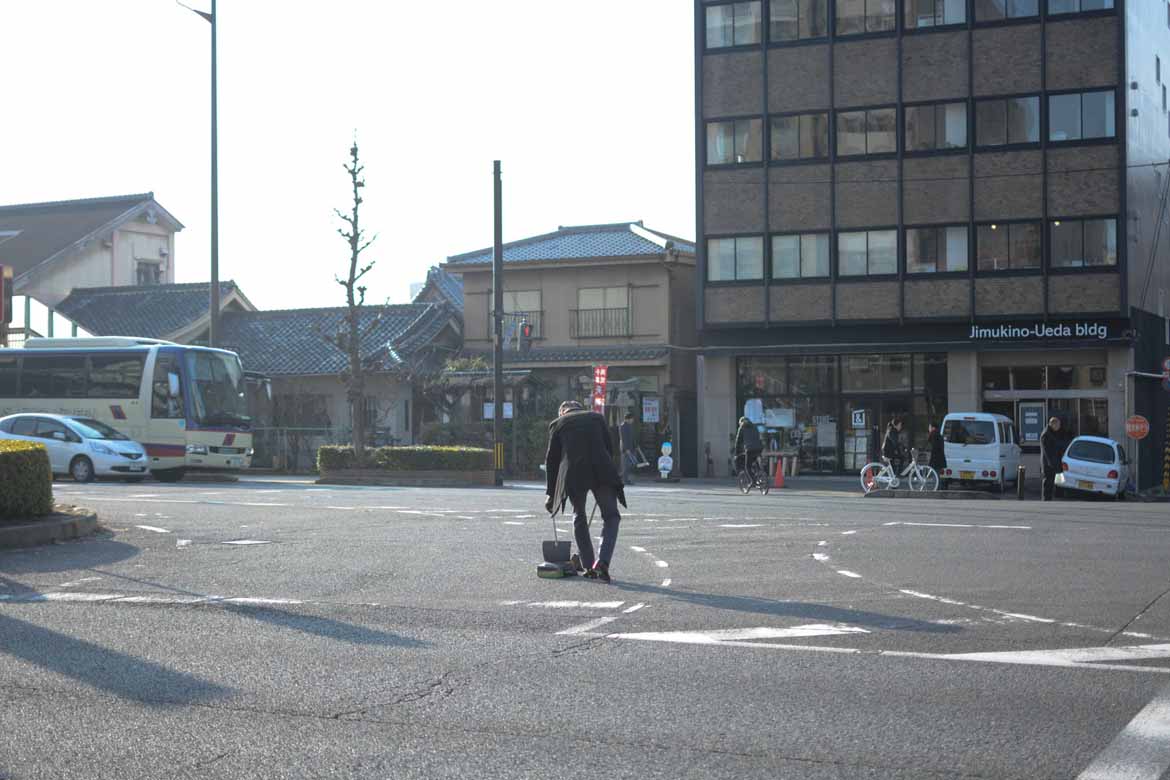
While streets in Japan seem at first sight extremely clean, especially if you are used to live in Neukölln, we were surprised how much rubbish one finds when looking carefully. It was also a wonderful way to start the day as a group while getting your mind ready for the day to start. When back to Berlin, I hope to implement these practice into our NION meetings.
Kyoto Design Week
The month ended with our exhibition during Kyoto Design Week. For this occasion we collaborated with Ikebanameisterin Toyoho Nakatani. It was a wonderful experience to communicate without words, but through engaging in a dialogue of creative expression. It was wonderful to share our work with the people who came to visit our exhibition.
